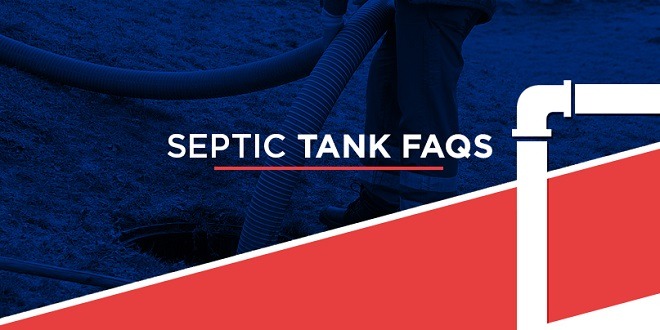If you live in an outlying or rural location without access to a modern sewage network, your house or business almost certainly has a septic tank system. Septic tanks are an excellent way to treat wastewater on your own property by utilizing both simple technology and nature’s natural processes.
However, care must be taken in what goods, waste, and chemicals can be flushed down your home’s various drains. Though effective in their own right, septic tanks are far more finicky than traditional sewage systems in terms of what they will absorb safely.
The incorrect things and fluids can wreak havoc on an otherwise healthy septic system, forcing a professional to come to your property and perform potentially costly repairs and cleaning.
You may save money while also keeping your facilities in excellent condition by following these simple tips.
In this article, we’ll explain what septic tanks are used for, what’s safe to put in them, and most importantly, what should not be placed in them. Hopefully, you’ll have a better understanding of why you should invest in a septic system and whether one is suitable for your property.
What Are Septic Tanks Used For?
Septic tanks are an alternative option for properties and businesses that do not have access to a centralized sewer line. They are generally located outside the main building, just beyond the external premises where people use wastewater to discharge down drains. The following wastewater can be generated from numerous places: the kitchen sink, dishwasher, bathtub, laundry room, and toilet. This liquid garbage is usually more than 99% pure.
The septic system does the work for you on your own property instead of sending all of this daily unwanted runoff to a distant municipal treatment plant. The wastewater is cleaned in the tank, and then it is dispersed through a series of pipes deep into the earth where nature can decompose these organic materials naturally and safely.
How Do Septic Tanks Work?
In general, a septic system is made up of two main components: a tank and an absorption field. The last pipe that leads directly to the sewage tank is fully driven by gravity and has a downward slope.
A septic tank is a watertight receiving vessel that is typically constructed of concrete or high-density polyethylene and placed beneath the surface of your land. All of this water is collected in the tank, where it undergoes natural decomposition processes to be dispersed into the ground.
Without particular care, organic matter in this runoff water will divide into three components within the tank after a while. The top of the tank will be filled with oils and grease in the form of scum. Sludge will begin to settle at the bottom. What remains floating in the middle is mostly effluent, which is a liquid.
The biodegradable material will break down over time, aided by the naturally occurring microorganisms that were already in the tank. The accumulation of scum oils and sludge solids will eventually need to be removed by a professional.
The majority effluent water, on the other hand, is diverted into the drain field after it has been emptied from the septic tank.
The flowing liquid is funnelled into perforated plastic pipes or gravel tunnels that distribute it to a greater soil absorption area, allowing the dirt to do the rest of the work naturally.
Microorganisms in the earth’s dirt begin to filter and destroy the germs in this runoff, eliminating any remaining odours or toxicity. It is both efficient and ecologically beneficial.
What Can Go in Septic Tanks?
The septic tank system can only handle a small number of items. The following are your greatest strategies:
- Green, biodegradable cleaning products should be used in all areas of your home where possible
- Garbage disposals are not designed to be used with rotten or perished foods, fruits and veggies. Fruits and vegetables may get down the garbage disposal, although you should not use your disposal excessively. A compost bin is a much better option for eliminating all of your organic leftovers and potato peels. Try to establish the habit of scraping dirty dishes into the trash instead of putting them down the sink drain.
- Only use thin, highly specialized toilet paper designed for septic tank systems.
- Consider using a low-flow toilet, showerhead, or washing machine. Water-efficient showerheads, dishwashers, and laundry machines are all worth considering. Showers that go on for too long or use too much water can put a lot of strain on your septic system.
- The final two things that should ever enter your pipes are water and toilet tissue. Only water, toilet tissue, and human waste should be sent down the drain in the long run. Anything that can’t be broken down naturally is never appropriate, and you’ll wind up with a lot of trouble over time.
What Shouldn’t Go in a Septic Tank?
When moving from a city with a centralised sewage system to another that is not, this is where your attitude and waste disposal habits will have to change.
It may all take some getting used to at first, but once you’re acclimated to the distinctions, you’ll discover that it’s not much more difficult than recycling.
The most essential thing to bear in mind is that your septic tank is not a trash can. Anything non-biodegradable should not be flushed down the sink or toilet.
Of course, several hazardous things are restricted in regular plumbing systems, but when it comes to septic tanks, the consequences can be much more severe.
Septic tanks can store a significant volume of regular wastewater, but the following are the most harmful exceptions:
- Coffee grinds, on the other hand, are an uncommon yet significant cause of blockages. Surprisingly, coffee grounds are a major offender. Even if they pass through a waste disposal unit, coffee grinds degrade too slowly and can obstruct your system.
- Cigarette butts, cat faeces, kitchen towels, tampons, contraceptives, nappies, and any other thick or plastic item cannot be flushed down a septic tank system.
- Toilet bowl cleaners that include acid compounds or bleach. These chemicals, like chlorine bleach and peroxide, can harm the beneficial bacteria in your septic system. Instead of using non-eco friendly products, try to use organic, ecologically responsible ones.
- All types of harsh chemicals (i.e. paint thinner, petrol, solvents, weed killers, insecticides, etc.) should be disposed of in the proper manner and sent to approved waste collection centres in your region. Never pour them down the sink.
- Grease, fats, and juices are also extremely toxic. Bacon fat and other frying oil should be collected and disposed of in the same manner as normal garbage. A grease catch between the sink and your septic tank is also a good idea. These oils aid in the formation of scum on the inner surface of the tank, eventually polluting the soil drainage area surrounding it. Soil that has been contaminated cannot naturally break down germs that have entered it.
- Even after maintenance, medicines are a pain. Antibiotics and antibacterial can disturb the bacteria-friendly environment in your septic tank. Even human waste from people on prescription drugs can disrupt your sewage system’s performance. Return any unused medications to your local chemist.
How to Maintain Your Septic Tank
You may have already learned that septic systems are basic yet ingenious machines that remove waste from your property when you don’t have a connection to the sewer.
They separate oily and solid materials from the liquid, and send out effluent water into the soil of your property’s surroundings. Naturally occurring microorganisms in the septic tank, as well as in the ground, consume away at the most noxious substances while also biologically completing the sewage treatment process.
However, septic systems are susceptible to problems and need a considerably greater level of attention than standard houses to function correctly. The landowner must carefully maintain this equilibrium by regulating what is washed down their toilets, sinks, and drains.
A septic tank, like a car, will require maintenance just like any other mechanical device. Even with the above recommendations, you’ll need a septic tank professional to visit your property and perform an inspection and cleaning every 3-5 years depending on its size.
Get Your Free Quote Today
Our team has over 20 years of expertise in developing, draining, and maintaining septic tank systems. Our experts are available to answer any questions you may have at any time. We’d be delighted to go through your septic tank needs in detail and offer you a free, no-obligation quotation.
Contact OMDI now if you want to learn more about installing a sewage system on your property, sewage tank maintenance, or if you think there’s something wrong with your system.
 Masstamilan24.com
Masstamilan24.com





